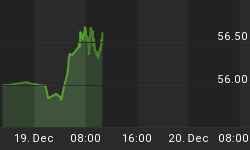President Draghi wants a tighter fiscal union in Europe. Germany will probably support the plan. The eurozone is changing shape. How could this affect U.S. markets?
Debt will be shared.
Mario Draghi said the ECB is ready to do whatever it takes to preserve the euro. What does he really mean? In order to help Spain, and eventually Italy, the ECB will need to buy large amounts of peripheral bonds, while the ESM rescue fund will need to be allowed to operate at maximum volume. Core countries, such as Germany, will be responsible for weaker nations. As a result, in one or two years time, the eurozone will probably share its debt. With interest rates so low, economic activity could rebound again. Wages will rise. Unemployment will decline.
The other side of the story will be low growth, higher inflation, and higher interest rates. A political union is also necessary for Europe. With time, perhaps a decade or two, current challenges will resurface. Debt would then have to be reduced in peripheral countries, and unemployment might rise again. Nonetheless, the mutual debt-sharing plan is probably the only option available to preserve the eurozone, considering the large differences between the northern and southern nations. It will calm the financial markets and put the European crisis on the backburner for a while. A stable union will be beneficial for everybody.
U.S. dollar is overbought.
Aside from the German's backup, the plan to succeed would require a weak currency. Currently, the euro is declining against all of the majors, and the trend should persist over the next few years. Nonetheless, the currency is expected to increase against the U.S. dollar over the short-to-medium term. The greenback is extremely overbought. According to the latest Commitment of Traders (COT) report, futures funds have bet massively in favor of the dollar over the past months. What is left to buy if all of the major players are already active in the market? The U.S. Dollar Index is leaning against the higher channel line of the past twelve months. A breakout failure would set a decline until year's end. Historically, the last part of the year is not favorable to the U.S. dollar. Finally, there is a divergence between price and the RSI indicator on the weekly chart. Previously, it could anticipate the important turning points. The index could decline to 81.00, which should correspond with the EUR/USD 1.26/1.30. A decline in the U.S. dollar could tally with an increase in stocks and gold prices.
U.S. dollar: bull cycle for 5-7 years.
The longer-term picture, nevertheless, might reveal a strong rebound of the U.S. dollar that could last five to seven years, if history repeats itself (1980-1985 and 1995-2002). The move could extend about 50% from the bottom. Timing the trend will be key for proper investing and keeping an eye on commodity prices could help size the move. In fact, the U.S. dollar has shown a tendency to bottom when commodity prices are topping. During the past 75 years, bull trends in commodities have lasted for 12-13 years from the bottom (CRB Index: 1938/1951-1968/1980). The current bull market started in 2002. As a result, a top of the EUR/USD could theoretically be projected to 2014/2015. By then, the huge U.S. debt could have been reduced, and the U.S. dollar will be free to fly again.















